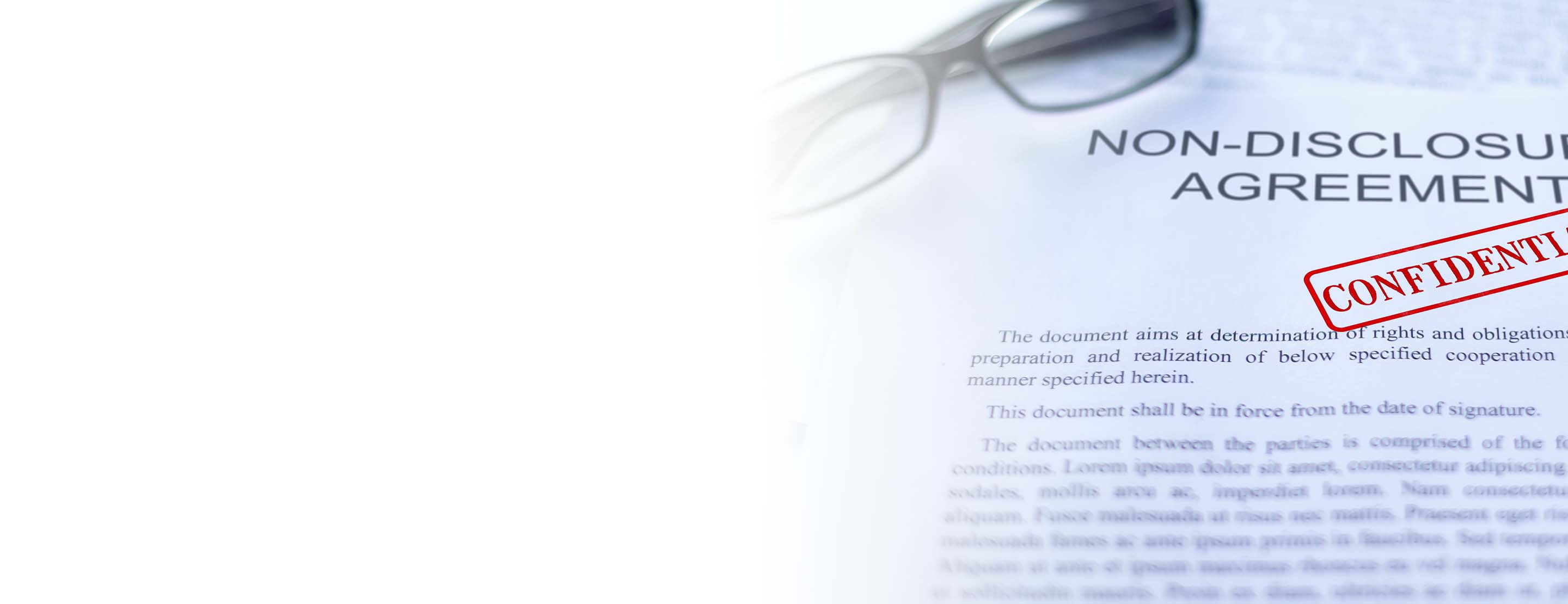
article
4 things you should know about non-disclosure agreements
Non-disclosure agreements (NDAs) are legally binding agreements to keep information confidential. They go by other names in certain contexts, including confidentiality agreements (CAs), confidential disclosure agreements (CDAs), and proprietary information agreements (PIAs). No matter what they are called, the basic underpinning is the same: parties who have signed an agreement cannot discuss any information the agreement covers with a non-authorized party.
There are two main types:
- Unilateral NDA. Only one party has confidential information to protect — the disclosing party — and only one party agrees to keep it confidential — the receiving party.
- Mutual or bilateral NDA. Both or all parties have confidential information, and both agree to keep it confidential.
Companies use NDAs in many situations and to protect many types of information. Take, for example, the mergers and acquisitions process. When a company wants to be acquired, it is common to ask an interested buyer to sign an agreement so that confidential information can be freely shared during negotiations. Each side knowing it is safe helps the business relationship flourish.
With increasing frequency, NDAs are used when a worker has access to confidential information, like business plans, customer lists, marketing strategies, plans for a new product, pricing plans, proprietary processes, trade secrets, or other information that gives the company a competitive advantage — an advantage that would vanish if the information was disclosed. Because employers do not want workers to distribute this information or start a competing business of their own, they often have workers sign non-disclosure agreements to keep such information within the organization.
However, there is starting to be some skepticism in certain quarters toward what some see as the overuse of NDAs. For example, they prevented many people who settled #MeToo claims from discussing their situations, which some argue suppressed necessary information that could bring impermissible behavior to light. This situation has led to stricter scrutiny of non-disclosure agreements, making it all the more critical that they are drafted with great specificity and used judiciously.
The following are four things every organization ought to know.
1. An NDA is a legal document that protects your business information and trade secrets from vendors, employees, and third parties
Non-disclosure agreements help employers by protecting valuable, sensitive business information. Workers may need access to such information to do their jobs, and NDAs make it clear that they can use such information for work purposes but cannot share it outside the organization. Thus, the company has a reasonable level of assurance that work can be accomplished and sensitive information will remain closely guarded.
Beyond that, non-disclosure agreements give employers the following benefits:
- Provide clear expectations of workers. A good agreement clearly delineates which information is protected — for example, whether there are any exclusions — and explicitly spells out the consequences of breaking the NDA. A well-written document will leave a worker with little doubt as to which information is proprietary and must be handled in confidence — and what would happen if that did not occur.
- Help protect trade secrets. An organization may need to disclose some or all of a trade secret with third parties, like vendors, with whom they do business. If the third parties sign NDAs, the trade secret will still enjoy legal protection.
- Grant an employer additional legal recourse. If a worker who has signed an NDA discloses a trade secret, the business may have additional remedies beyond that agreement. In other words, it is not limited to the standard recourse of filing a state-law misappropriation claim. In most cases, a breach of NDA claim is also simpler to pursue than, say, a trade secret misappropriation claim.
2. NDAs are enforceable when they are signed — if they are properly drafted and executed
NDAs are enforceable once signed, provided they have been drafted and executed properly. Unilateral NDAs need only the signature of the receiving party, whereas mutual non-disclosure agreements need the signatures of both parties. There are some differences from state to state, but on the whole, this holds true for most jurisdictions.
The NDA must be supported by consideration, a legal term meaning there was a “bargain for exchange” between the parties — something was bargained for and received from the promisor to the promisee. To apply this to the case of an employment NDA, the organization gets its confidential information protected, and the worker, arguably, gets a job. In other words, at-will employment may be sufficient consideration to make agreements enforceable.
An NDA could be unenforceable if it is too broad, is not for a defined time period, covers information that is not confidential, or asks for illegal conduct. There are a great many circumstances that could nullify an agreement, but these are the circumstances that are an immediate red flag in most jurisdictions:
- Overly broad language. If an employer writes an NDA that is too broad or too restrictive, a court is more likely to view it with skepticism. That is especially true if the agreement is not limited in duration or scope.
- Not confidential information. If an organization has already disclosed the information covered by the non-disclosure agreement, then a court might say the agreement is moot. After all, what’s the point of trying to keep public knowledge a secret? An important thing to note is that disclosure does not necessarily have to be intentional. Disclosure through lax behavior counts, too.
- Request for something illegal. An NDA agreement that asks the worker to keep mum on an issue they are legally obligated to report would not withstand scrutiny.
- Consideration is not clear. In the previous section, we noted the common concept of consideration in an employment agreement. Not every judge accepts that so willingly, however. If it is unclear whether there was consideration or that power between the parties was grossly imbalanced, the agreement may be at risk.
3. Legal recourse is possible for a violated NDA
Non-disclosure agreements are a legal contract. If broken, the aggrieved party can take legal action; they should spell out what will happen if breached. Commonly, claims stemming from broken NDAs include:
- Breach of the contract
- Breach of fiduciary duty
- Misappropriation of trade secrets
- Copyright infringement
- Other intellectual property law violations
Imagine a worker or former worker breaks an NDA. If the business learns of this, it may seek an injunction to prevent the employee from further disclosure. The business may also file a lawsuit seeking financial damages for all losses related to the breach of confidentiality obligations.
Once again, state laws may differ somewhat in handling breach of a non-disclosure agreement.
4. Language and word choice in NDAs are of the utmost importance
Precise language is of the utmost importance in non-disclosure agreements. A well-drafted document defines obligations, safeguards sensitive information, and promotes clarity. Ambiguities or loopholes can lead to messy legal disputes or breaches of confidentiality. Clear language helps the signatories understand their rights and responsibilities and fosters compliance.
Done correctly, NDA agreements are legally binding contracts between two or more parties. Depending on the situation, NDAs differ by state and jurisdiction, making it tricky for organizations to ensure they have the utmost legal protection they need.
Not sure which is the right template for your confidential information? Do your organization’s NDAs protect you from potential lawsuits in the future? Start a free trial of Practical Law to access expert-written NDA samples and checklists to quickly execute confidentiality agreements and safeguard your company’s closely guarded information.
The content appearing on this website is not intended as, and shall not be relied upon as, legal advice. It is general in nature and may not reflect all recent legal developments. Thomson Reuters is not a law firm and an attorney-client relationship is not formed through your use of this website. You should consult with qualified legal counsel before acting on any content found on this website.

Want even greater insights on NDAs? Try Practical Law
Access a collection of NDA-related resources, including sample agreements, how-to guides and checklists created by 650+ expert attorney-editors